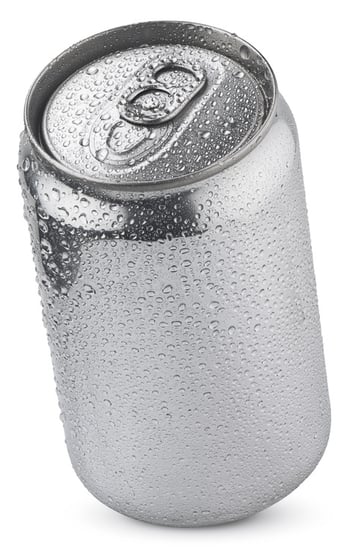 Here’s a simple question: what happens when something cold is then exposed to a hot and humid atmosphere? That’s easy, of course, “sweat” forms on the surface of the cold item. For instance, your cold drinks in the summer where there is a surprisingly large quantity of water droplets dripping off the glass or can. That condensation can lead to corrosion problems when shipping your valuable products to docks and into operations where you have less control; especially if your company is shipping globally and/or to areas where the climates are generally warmer. It can actually be an issue most anywhere.
Here’s a simple question: what happens when something cold is then exposed to a hot and humid atmosphere? That’s easy, of course, “sweat” forms on the surface of the cold item. For instance, your cold drinks in the summer where there is a surprisingly large quantity of water droplets dripping off the glass or can. That condensation can lead to corrosion problems when shipping your valuable products to docks and into operations where you have less control; especially if your company is shipping globally and/or to areas where the climates are generally warmer. It can actually be an issue most anywhere.
Condensation control is an important area of concern when applying protective packaging to your packaging plan. Certainly the food industry is quite aware of this as a significant cause of degradation to their products. Condensation is also a problem when encountering temperature changes such as from night to day, or when using refrigeration as a means of corrosion control for metal items; steels, electronics, and non-ferrous metals. The accelerated change in temperature for the item is problematic upon arrival to intended destination.
Corrosion on metals is made worse with surface contaminates. Contaminates such as sulfur, chlorine, ozone, nitrous, form acids when combining with water. Examples, that mix with the condensation form an electrolyte and begins to make your corrosion problem worse. This type of corrosion can happen very quickly and show itself for your customers to see when unpacking your products in their facility. Even worse, if not caught very early, particularly with electronics, the effects can rob your product of its intended useable life or even its warrantied life. Intermittent defects, latent defects, stress on power supplies, and less capacity to perform are all factors to inhibit your product from meeting customer expectations. At stake are costly returns, replacements, reworks, additional freight charges, additional engineering costs, and the cost to your company’s reputation.
Here are 4 ways to help combat the problem of condensation and corrosion.
- It is important to keep contaminates from all surfaces, which means clean operations from beginning to end including your parts suppliers. Reactive contaminates can be introduced at any point in manufacturing/assembly process, but most likely from the cleaning and rinsing steps. Ensure your plant and suppliers plants are cleaning parts with uncontaminated detergents and rinses. A product is only as good as its weakest point.
- When possible, employees should wear gloves when handling product. Fingerprints are acidic and will cause corrosion.
- Use in-process protection such as clean totes and lids, preferably designed to keep the atmosphere from depositing elements upon the product, are recommended.
- Proper barrier packaging and desiccant usage can help maintain your product’s integrity when in its most vulnerable position, which is often during shipping and storage. Best practice for the internal pack is to have it remain under dew point levels. The objective with condensation control and what works best is when there is a balance created where the inside-pack environment is kept under the dew point but not too dry, which may stress the barrier material, and/or prematurely dry out lubricants and gaskets, and/or creating electro-static fields from tribo-charging that can lead to catastrophic electrostatic discharge to electronics or simply hurt a handler.

Liberty Intercept Blog
4 Ways to Help Combat the Problem of Condensation and Corrosion
Posted by Joe Spitz on Oct 23, 2017 2:25:35 PM
Condensation control is an important area of concern when applying protective packaging to your packaging plan. Certainly the food industry is quite aware of this as a significant cause of degradation to their products. Condensation is also a problem when encountering temperature changes such as from night to day, or when using refrigeration as a means of corrosion control for metal items; steels, electronics, and non-ferrous metals. The accelerated change in temperature for the item is problematic upon arrival to intended destination.
Corrosion on metals is made worse with surface contaminates. Contaminates such as sulfur, chlorine, ozone, nitrous, form acids when combining with water. Examples, that mix with the condensation form an electrolyte and begins to make your corrosion problem worse. This type of corrosion can happen very quickly and show itself for your customers to see when unpacking your products in their facility. Even worse, if not caught very early, particularly with electronics, the effects can rob your product of its intended useable life or even its warrantied life. Intermittent defects, latent defects, stress on power supplies, and less capacity to perform are all factors to inhibit your product from meeting customer expectations. At stake are costly returns, replacements, reworks, additional freight charges, additional engineering costs, and the cost to your company’s reputation.
Here are 4 ways to help combat the problem of condensation and corrosion.
Leave a Comment